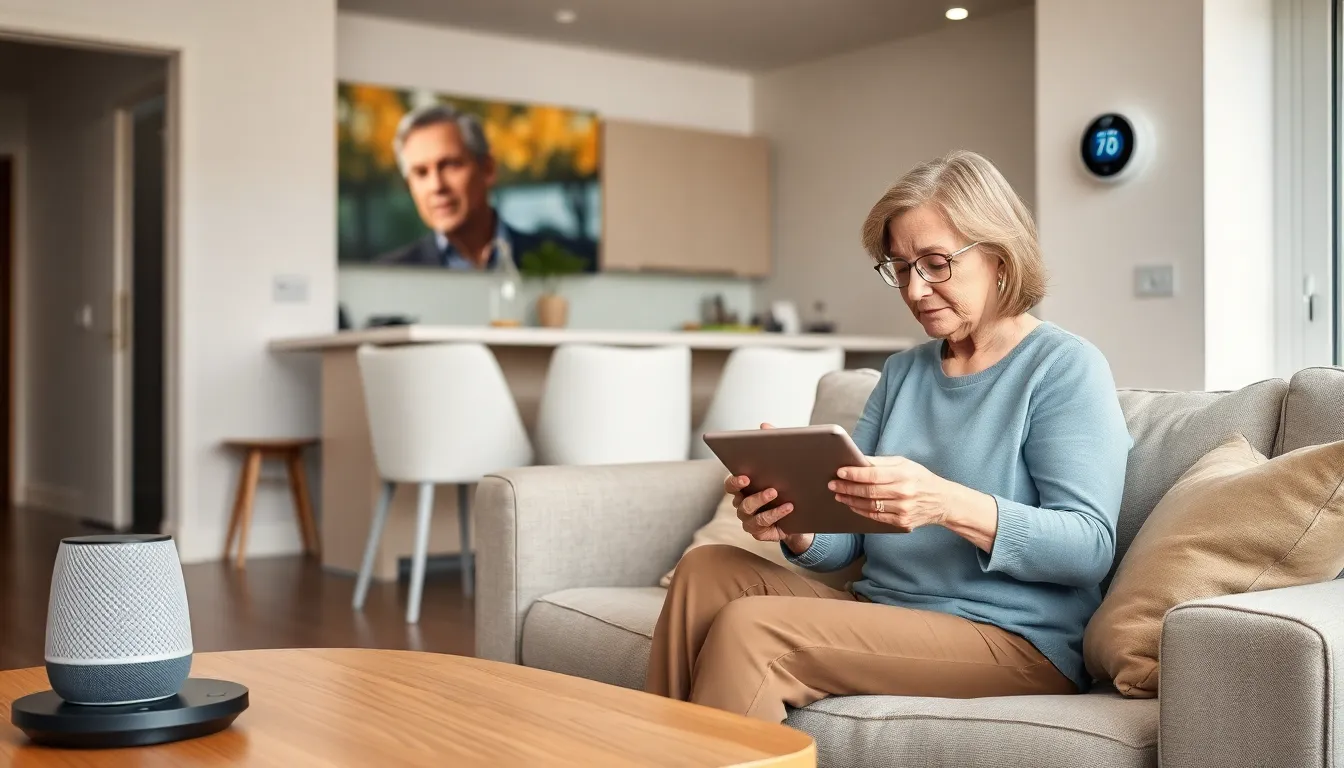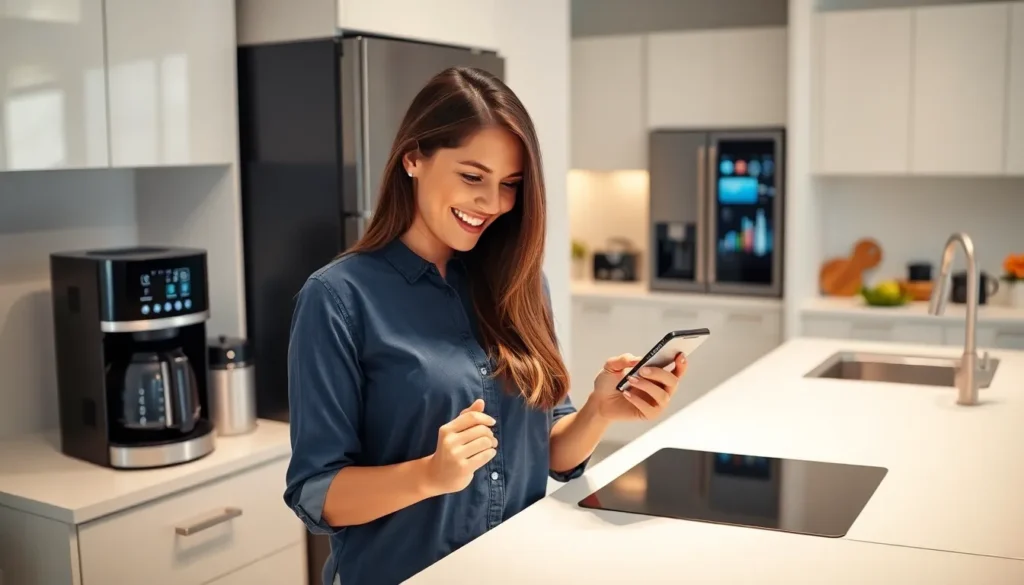In a world where technology promises to make life easier, smart living is no longer just a trend—it’s a lifestyle. Cullen Reviews dives into the realm of smart living, showcasing gadgets and innovations that not only simplify daily tasks but also add a sprinkle of fun to the mundane. Imagine controlling your lights, thermostat, and even your coffee maker with just a few taps on your smartphone. Sounds like magic, right?
Table of Contents
ToggleOverview of Smart Living on Cullen
Smart living transcends merely a trend; it represents a lifestyle transformation driven by technology. Cullen Reviews highlights numerous devices enhancing everyday tasks, contributing to convenience and enjoyment. These gadgets include smart lights, which allow users to control brightness and colors via smartphones. Smart thermostats adjust home temperatures automatically, optimizing energy consumption and comfort.
Integrating technology into daily routines enhances both enjoyment and efficiency. Users can brew coffee remotely, ensuring a fresh pot is ready upon waking. Security systems offer monitoring through mobile devices, enhancing safety while providing peace of mind.
Home automation hubs centralize control, enabling seamless interaction among devices. Smart speakers serve not only as music players but also as home assistants, answering questions or managing schedules. Voice commands streamline operations, making smart living accessible to everyone.
Moreover, smart kitchens are becoming increasingly popular. Appliances such as refrigerators can inventory food items, alerting users when they run low on essentials. These innovations facilitate meal preparation and reduce food waste.
Studies show smart living can lead to significant energy savings, which appeals to environmentally conscious individuals. By optimizing daily operations, users find more time to focus on personal endeavors. The growing availability of smart products marks a shift toward an interconnected lifestyle, promoting an enhanced user experience.
Key Features of Smart Living

Smart living encompasses various features that significantly enhance daily convenience and enjoyment. The integration of advanced technologies forms the backbone of this lifestyle.
Smart Home Technology Integration
Smart home technology centralizes control of multiple devices, enabling seamless operation. Users can manage lights, thermostats, and security systems from a single platform. Voice-activated smart speakers assist in executing commands, simplifying everyday tasks. Home automation hubs ensure different devices communicate effectively, creating a synchronized environment. Additionally, innovative gadgets like smart locks enhance security while offering quick access options. The result is a cohesive living experience where technology simplifies routine activities.
Energy Efficiency and Sustainability
Smart living promotes energy efficiency through automated systems that optimize usage. Smart thermostats, for example, learn individual habits to adjust temperatures intelligently. This leads to noticeable reductions in energy consumption. Furthermore, smart appliances can monitor water and electricity use, promoting sustainable practices. Research indicates homes equipped with smart technologies conserve energy better than traditional setups. Consumers who prioritize sustainability benefit from smart living while enjoying lower utility bills. Overall, these energy-efficient innovations contribute to a greener lifestyle.
User Experience and Reviews
User experiences with smart living technologies highlight their benefits and areas for development. Many find these innovations transformative and convenient.
Positive Feedback
Users often praise the seamless integration of devices. Smart thermostats, for example, adapt to personal schedules, significantly enhancing comfort levels. The ability to control lights through smartphones adds considerable convenience. Reviewers also commend smart kitchens, where inventory tracking reduces food waste and simplifies meal prep. Enhanced security features like smart locks and surveillance systems receive high marks for reliability. Additionally, users appreciate voice-activated assistants for their hands-free functionality, making everyday tasks more efficient.
Areas for Improvement
Despite the advantages, some users report dissatisfaction with connectivity issues. Disruptions can occur when devices fail to communicate effectively. User manuals may not provide adequate guidance, complicating initial setup for some individuals. Moreover, certain devices may become unresponsive over time, leading to frustration. Battery life poses another challenge, with some smart gadgets requiring frequent recharging. Lastly, users express concerns over privacy, questioning data security and surveillance practices linked to smart devices. Improving these areas could enhance overall user satisfaction.
Comparisons with Other Smart Living Solutions
Cullen Reviews highlights the competitive advantage of smart living technologies over traditional ones. Smart home automation systems offer integrated control that enhances comfort and efficiency. Devices operate in harmony, allowing users to manage multiple functions smoothly through a single application.
In contrast, conventional home setups often require manual adjustments, leading to inefficiency. Enhanced security features in smart living solutions, such as smart locks and surveillance cameras, provide peace of mind that traditional security measures struggle to match. Users enjoy real-time alerts and remote monitoring capabilities, keeping homes safer.
Moreover, smart thermostats learn user preferences and automatically adjust temperatures. Traditional thermostats lack this adaptability, which can cause energy waste and discomfort. Energy savings emerge as a critical advantage of smart home technologies, attracting consumers invested in sustainable living.
Researchers indicate that homes with smart technologies typically consume less energy than those fitted with older systems. Such efficiency not only reduces utility bills but also appeals to environmentally conscious individuals. Smart living solutions provide detailed energy usage data, enabling users to make informed choices about their consumption.
Integrations between smart devices improve user experience. Smart kitchens, for example, track food inventory and send alerts when supplies run low. Traditional kitchens provide limited assistance, leading to more waste and time spent on grocery runs.
User feedback consistently emphasizes the convenience of smart systems. Many prefer the seamless interaction between gadgets, ensuring daily tasks are simplified. Observations reveal that while smart living offers numerous benefits, users face challenges like connectivity issues and privacy concerns. Addressing these areas can significantly enhance satisfaction, positioning smart living as the optimal choice for modern households.
Smart living is more than just a trend; it’s a transformative lifestyle that embraces technology to enhance everyday experiences. The integration of smart devices into daily routines not only simplifies tasks but also promotes energy efficiency and sustainability.
User experiences highlight the convenience and comfort these innovations bring while also pointing out areas for improvement. As technology continues to evolve, addressing connectivity issues and privacy concerns will be crucial in maximizing user satisfaction.
Ultimately, smart living stands as a compelling choice for modern households looking to combine efficiency with enjoyment in their daily lives. Embracing this lifestyle can lead to a more streamlined and fulfilling home environment.

